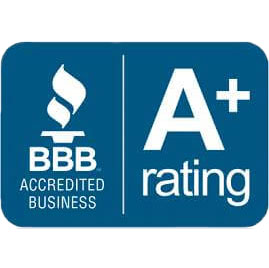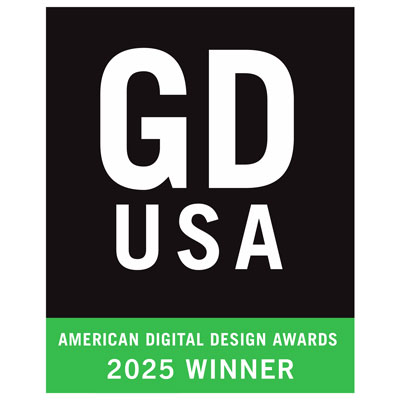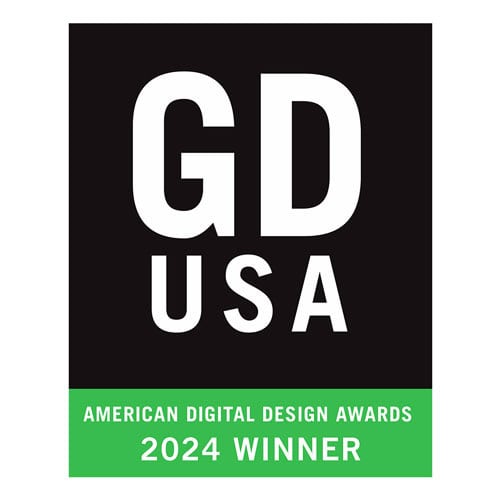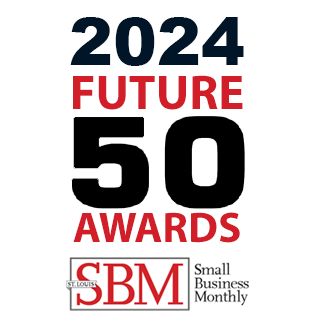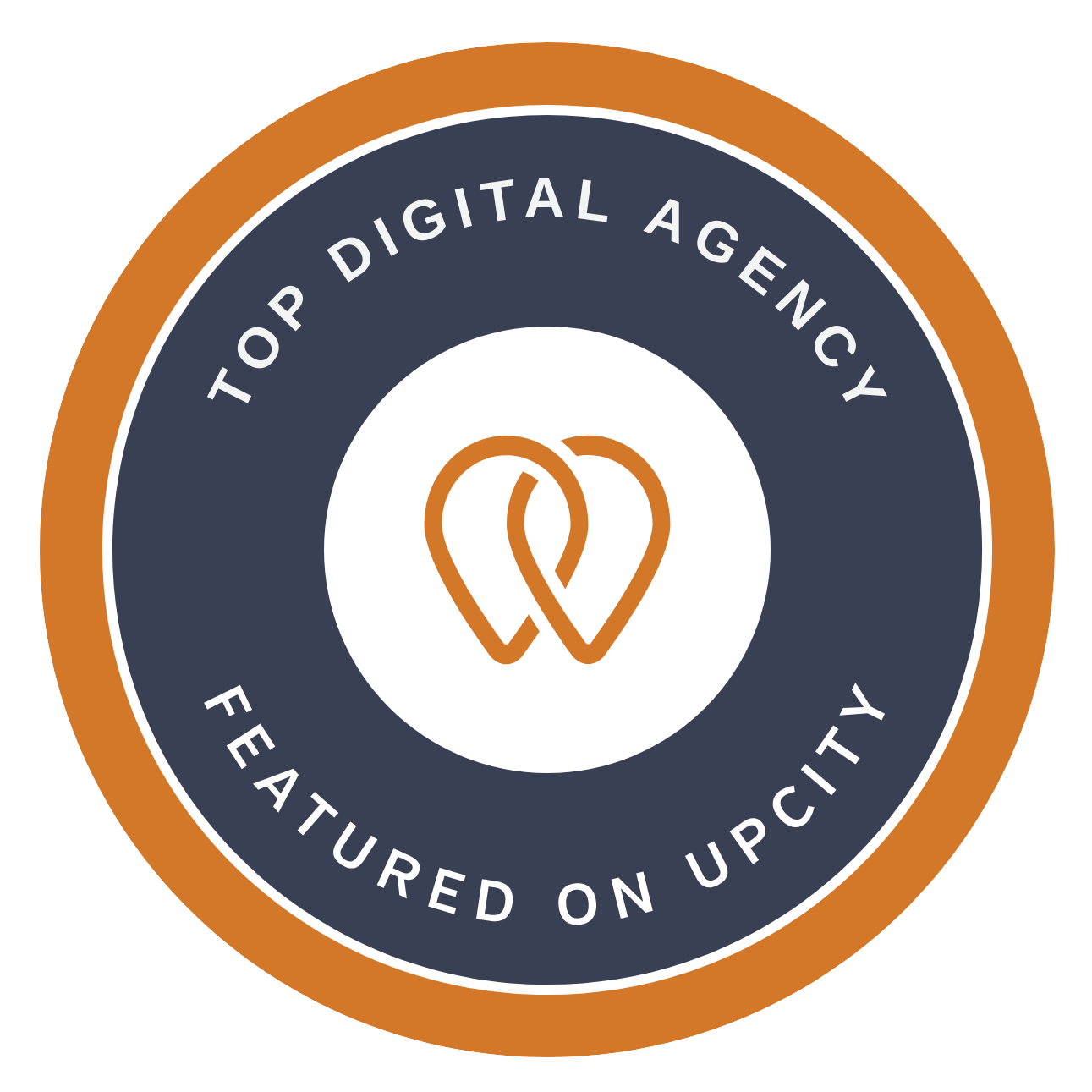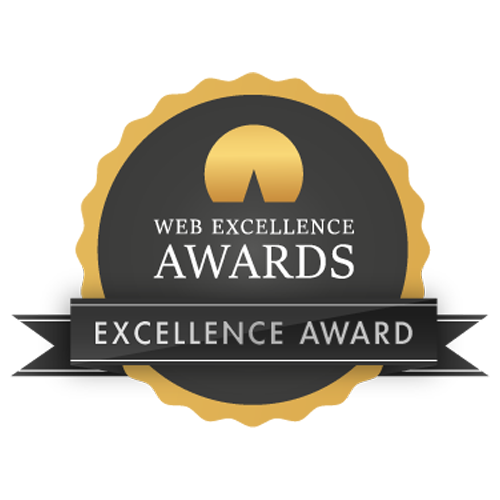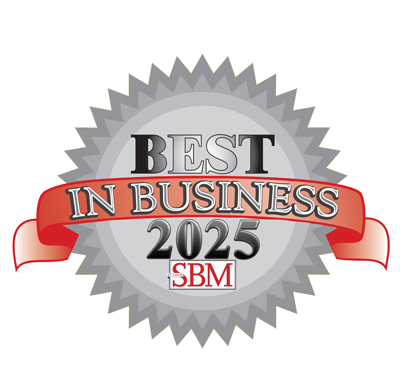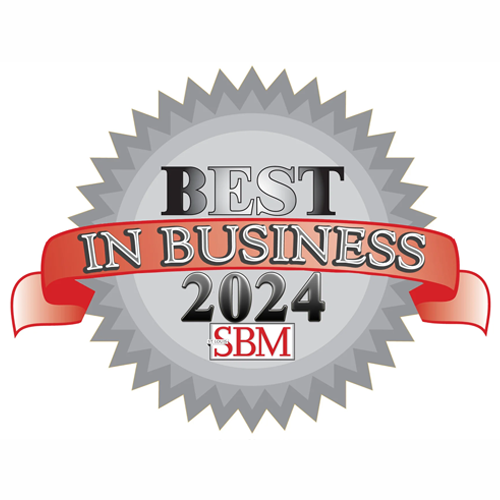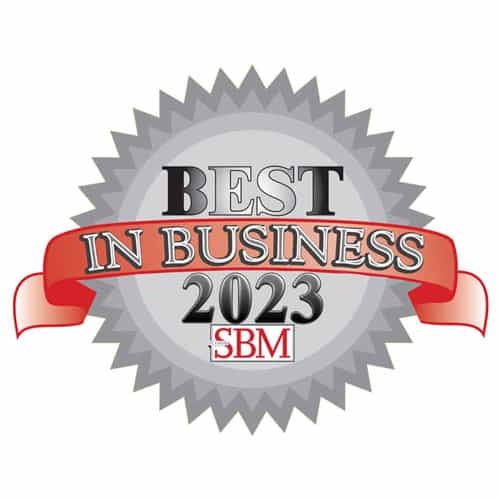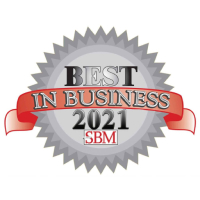November 2025 Marketing News: Trends & Insights
AI Moves From Tool to Infrastructure
AI has officially crossed from “assistant” to “architecture.”
Generative and predictive models are now embedded across media planning, creative testing, and performance forecasting. The biggest shift this month is operational: AI isn’t a department anymore—it’s infrastructure. Agencies are reorganizing around it, not layering it on top.
Systems Thinking Becomes the New Strategy
Across the industry, leaders are moving away from one-off campaigns toward connected, compounding systems. It’s not about the next post or promo—it’s about how every touchpoint reinforces the others. The winners in Q4 will be those whose marketing works like an ecosystem, not a megaphone.
Short-Form Video Keeps Its Crown
TikTok, Instagram Reels, and YouTube Shorts remain the engines of attention. But the tone is changing: less polish, more play. Behind-the-scenes clips, voiceovers, and authentic commentary are outperforming trend-hopping. Brands are realizing audiences don’t want ads in disguise—they want people with a point of view.
Personalization Tightens as Privacy Rules Rise
The personalization-privacy paradox is hitting full speed. Marketers want deeper relevance, but regulators and platforms are clamping down. First-party data collection, consent frameworks, and ethical segmentation are now baseline expectations. Authentic personalization—done with respect—is the only sustainable path forward.
Experience Design Takes Center Stage
“Experience as strategy” is going mainstream. Brands are realizing loyalty doesn’t live in the logo—it lives in how the brand behaves. CX and BX teams are being pulled into the same meetings, aligning messaging with delivery. Expect more marketers to carry “experience” in their titles by next year.
Budgets Under Pressure, Proof in Demand
Q4 competition is fierce. Ad costs are spiking as brands fight for holiday visibility, and CFOs want proof before approving spend. This is driving a renewed focus on attribution, retention, and Customer Lifetime Value. The smartest marketers aren’t shouting louder—they’re investing where relationships last longer.
Community and UGC Redefine Trust
User-generated content continues to outperform brand-produced creative. The reason is simple: credibility. Real people carry more influence than paid placements. Smart brands are building systems that invite customers into the story, not just the sale.
Feedback Loops Become the Hidden Advantage
Real-time experience data is shaping how brands evolve. Companies with built-in feedback loops—surveys, reviews, service data—are adapting faster and predicting churn before it happens. The future belongs to marketers who listen as much as they launch.
AI-Powered Marketing Mix Models Go Mainstream
Transformer-based models are quietly replacing static dashboards. These systems simulate budget shifts across channels in real time, helping brands maximize ROI. Marketing leaders who embrace this now will out-optimize competitors still stuck in last-click attribution.
Authenticity Outperforms Perfection
Audiences continue to reward honesty over hype. Raw video, human writing, and unscripted stories outperform studio polish. The brands growing fastest aren’t the ones with the best graphics—they’re the ones customers trust to be real.
Our Take
November feels like a moment of maturity for marketing.
AI is woven into the walls now, not sitting in a corner as a novelty. Budgets are under scrutiny, but clarity and creativity still outperform scale. Experience design is no longer an emerging idea—it’s the blueprint for loyalty.
At Seafoam, three themes stand out this month:
- Systems beat sprints. Campaigns may spike metrics, but systems sustain them.
- Experience is equity. Every touchpoint either deposits or withdraws from brand trust.
- Listening is leverage. The companies who build feedback into their marketing will always stay ahead of those who only broadcast.
The industry is catching up to ideas we’ve championed for years: alignment, experience, and clarity. The noise is still loud, but the path forward is simple—build something that lasts.
November 2025 Marketing Events
DigiMarCon World 2025
Nov 5–7 | Las Vegas, NV & Online
Global digital-marketing and AdTech event covering data, automation, and emerging platforms.
Digital Summit Raleigh 2025
Nov 12–13 | Raleigh, NC
Sessions on CX, storytelling, and AI-driven strategy. Great for system-minded marketers.
B2B Marketing Expo USA 2025
Nov 18–19 | Los Angeles, CA
Focused on B2B innovation, demand generation, and growth frameworks.
DMWF North America 2025
Nov 25–26 | Online
Virtual event exploring social, content, and martech integration under the CX umbrella.
Web Summit 2025
November | Lisbon, Portugal
The world’s largest tech and marketing conference. Future-facing themes include AI ethics, brand experience, and sustainable growth.
October 2025 Marketing News: Trends & Insights
AI Becomes a Team Member, Not a Tool
Marketers are no longer talking about “using” AI—they’re working with it. Agents now optimize ad tests, adjust budgets, and flag underperforming creative on the fly. The question isn’t whether to integrate AI, but how to build systems where human creativity and machine intelligence complement each other.
Google’s Human-First Update Shakes SEO
The most recent algorithm update punished generic, mass-produced content and rewarded work that sounds human. Voice, context, and originality now matter more than keyword density. The shift is clear: if your content feels like a robot wrote it, expect to drop.
Social Platforms Double Down on Commerce
TikTok, Instagram, and even LinkedIn are accelerating shoppable features. Likes and impressions are being edged out by saves, shares, and direct purchases. Creators are the new storefronts, and performance-driven partnerships are becoming the backbone of social strategy.
Vibe Marketing Takes Hold
Instead of asking “what’s our channel strategy?” brands are asking “what’s the mood we’re creating?” Tone, cultural resonance, and aesthetic drive campaigns—with AI filling in the speed and scale. The brands winning are the ones who feel current, not just correct.
Budgets Tighten, Scrutiny Sharpens
Forecasts for ad spend growth were trimmed again this month. With economic uncertainty and tariffs rattling supply chains, CMOs are under pressure to prove ROI. Every campaign is being asked to justify its existence.
Brands Become Studios
Serial content, mockumentaries, and episodic storytelling are edging out traditional campaigns. Instead of fighting for thirty seconds of attention, brands are creating narratives that feel like entertainment—with product woven in subtly.
Localization Outpaces Globalization
Fall campaigns this year aren’t one-size-fits-all. From regional slang to weather-driven product pushes, brands are adapting their creative weekly to local conditions. The hyper-local moment is back in force.
Mobile Measurement Evolves Under Privacy Pressure
With attribution harder than ever, retention metrics are rising in importance. First-party data and cohort-based insights are becoming non-negotiable. If you can’t prove mobile’s value, budget will migrate elsewhere.
AI-Powered Marketing Mix Models Gain Traction
Transformer-based models and contrastive learning are starting to shape how brands distribute budgets across channels. It’s not sci-fi anymore—AI-driven MMM is changing real-world media planning.
Authenticity Wins Over Polish
Glossy perfection is out. Reviews, raw video, and community-led storytelling are outperforming ad spots. Consumers want transparency, values, and unfiltered experiences that feel like real life.
Our Take
October is about recalibration.
Budgets are under the microscope, but customer expectations keep rising. AI is embedding deeper into workflows, yet it’s the human spark—humor, cultural timing, empathy—that separates the brands people scroll past from the ones they stop for.
At Seafoam, three truths stand out this month:
- Creativity matters more than ever. Tools can accelerate output, but originality drives outcomes.
- Localization is leverage. The more campaigns feel “for me,” the better they perform.
- Systems create certainty. In a turbulent market, aligned infrastructure—data, brand, experience—makes growth predictable.
The landscape is noisy, but the fundamentals still win: clarity, consistency, and trust.
October 2025 Marketing Events
Advertising Week New York
Oct 6–9 | New York, NY
The industry’s mega-event: 1,200+ speakers across marketing, media, culture, and tech.
ANA Masters of Marketing Conference
October | —
Senior marketing leaders gathering to define the future of brand and growth.
ANA Multicultural & Inclusive Marketing Conference
Oct 6–8 | Carlsbad, CA
A deep dive into inclusive strategies, culture-driven campaigns, and DEI marketing.
Digital Marketing World Forum (DMWF) North America
Oct 13–14 | New York, NY
CX, Martech, digital transformation, and how AI is reshaping execution.
Ahrefs Evolve
Oct 14–15 | San Diego, CA
SEO and content strategies for the AI age.
Festival of Marketing
Oct 2 | London, UK
Europe’s flagship marketing gathering—big ideas, brand case studies, and future trends.
MAICON (Marketing Artificial Intelligence Conference)
Oct 14–16 | Cleveland, OH
AI-driven marketing strategies, ethics, and practical workflows.
Global Conference on International Business & Marketing (GCIBM)
Oct 7 | Virtual & In-person
Cross-border insights for marketers navigating global audiences.
B2B Marketing Expo / White Label World Expo
Oct 15–16 | Las Vegas, NV
Performance-driven B2B tactics, lead gen, and ecommerce innovation.
Digital Summit Philadelphia
Sept 30–Oct 1 | Philadelphia, PA
Regional U.S. conference blending content, analytics, and digital execution.
For years, growth playbooks have told the same story: buy more reach, spend more on ads, and outbid competitors for attention. But lately, that story has started to collapse. To succeed, businesses need to rethink their acquisition strategy.
Customer Acquisition Costs (CAC) have exploded. Paid channels are crowded. Privacy changes are squeezing targeting. Every dollar spent is harder to justify, and the “just add more ad spend” approach is no longer a safe bet.
Here’s the hard truth: most acquisition strategies are broken not because businesses aren’t spending enough, but because they’re spending without fixing the leaks in their customer experience.
The CAC Explosion
Digital advertising costs have more than doubled in the past decade, with some industries seeing CAC climb by 60–70% in just the last five years. At the same time, conversion rates have dropped, and customer loyalty is harder to earn. That means companies are paying more and getting less in return.
The result? Businesses are fighting over the same pool of prospects, burning cash to get a one-time purchase, and struggling to prove profitability.
Why Retention Is the Real Growth Lever
Here’s where most strategies miss the mark: profit doesn’t come from the first sale. It comes from the second, the fifth, the referral, and the upsell. Retention is what turns expensive acquisition into compounding revenue.
When you increase retention even slightly, profit snowballs:
- A 5% increase in retention can lift profits by 25–95%.
- Repeat customers spend up to 67% more than new ones.
- Loyal customers become your most effective (and cheapest!) marketers.
In other words, CAC is only “broken” if your business model assumes the first purchase has to carry all the weight.
Fixing the Strategy: Aligning Brand, Website, Marketing, and CX
At Seafoam, we see acquisition and retention as two halves of the same system. You don’t fix broken CAC by just tweaking ad budgets, you fix it by building marketing systems that make customers want to stay, return, and grow with you.
- Brand: Does your identity make a clear promise people believe in?
- Website: Is the buying journey simple, human, and trustworthy?
- Marketing: Are you attracting not just clicks, but the right-fit customers with staying power?
- Customer Experience (CX): Do customers leave interactions saying, “that was easy, that felt good, I’d do it again”?
When these four work together, retention becomes your growth engine. CAC still matters, but instead of being a drain, it becomes an investment that pays back over a customer’s lifetime.
The New Equation for Profit is a Better Acquisition Strategy
The old equation:
Growth = Spend more on ads.
The new equation:
Growth = Acquire with intention × Retain with excellence.
Businesses that understand this shift are already outpacing their competitors. They see CAC not as a broken cost, but as the spark that ignites long-term value.
That’s where the conversation about acquisition should be today; not “how do we pay less for a click,” but “how do we make every customer worth more?”
September 2025 Marketing News: Trends & Insights
Brands Lean Into “Millennial Cringe”
Self-aware nostalgia is the new currency. Crocs, Duolingo, and even major pop icons are embracing “cringe” with authenticity. The trick? Do it with wit and self-awareness, not pandering.
AI Personalization Becomes the Standard
Recommendation engines are passé. Now AI predicts not just what customers might want—but when and why. From dynamic messaging to predictive journeys, personalization is becoming a baseline expectation.
AI Acceleration Reshapes Workflows
Generative AI is no longer about “what’s possible.” It’s about “what’s faster.” Agencies are experimenting with billing by results instead of hours, while AI agents chip away at search, shopping, and campaign planning.
Campuses Are the New Runways
Back-to-school season has become a marketing moment. Student fashion is fueling TikTok virality, with brands like Skims and Shein driving campus-inspired collections that blur lines between everyday life and influencer culture.
CMOs Bet Big on AI, ROI Still TBD
At Cannes Lions, marketing leaders revealed massive AI investment plans—$10M+ annually for many. But consistent, scalable ROI remains elusive. The race is on to turn aspiration into evidence.
Affiliate Marketing Goes Video-First
Affiliate isn’t just alive—it’s leading the way in social commerce. With video now dominating traffic, creators and platforms are making performance-driven partnerships core to the purchase journey.
Digital Brand-Building Declines
As ad saturation and tracking hurdles mount, brands are re-centering on first-party data, communities, and physical experiences. The future belongs to those who can connect both online and offline.
Social Experiments Overtake Rigid Calendars
Brands are finding that entertaining, surprising, or niche content beats uniform consistency. Creative experiments and real-time listening are overtaking polished but predictable campaigns.
Content Hooks for September
Labor Day, National Read a Book Day (Sept. 6), National Salami Day (Sept. 7)—quirky holidays that fuel lightweight, culture-savvy campaign moments.
Mega-Trends Hold Steady
Hyper-personalization, authenticity, sustainability, and immersive experiences remain the tectonic forces shaping marketing in 2025.
Our Take
If August was about precision, September is about momentum.
AI is no longer a sidekick—it’s a co-pilot. The challenge is making sure it’s steering in the right direction. Meanwhile, culture is fragmenting faster than campaigns can keep up. From campus fashion to micro-holidays, marketers are chasing attention in real time.
At Seafoam, we’re seeing three truths crystallize this month:
- Personalization is table stakes. Customers expect journeys designed around them, not generic funnels.
- Culture is fluid. From memes to micro-trends, winning brands move fast but stay true to who they are.
- Systems create resilience. Amid shifting tactics, long-term success comes from strong infrastructure: first-party data, owned communities, and clarity of brand experience.
The marketing flywheel spins faster every month—but consistency, clarity, and trust are still what make it turn.
September 2025 Marketing Events
- INBOUND 2025 September 3–5 | San Francisco, CA HubSpot’s flagship event for marketers, sellers, and CX pros.
- AI for Marketers Summit September 3 | San Francisco, CA One-day focus on AI’s role in marketing strategy and execution.
- Product Marketing Summit September 3 | San Francisco, CA Positioning, messaging, and go-to-market mastery.
- Customer Marketing Summit September 3–4 | San Francisco, CA Retention and advocacy strategies at scale.
- ANA Measurement & Analytics Conference September 8–10 | Chicago, IL Data-driven insights and ROI measurement.
- SmashingConf September 8–11 | New York, NY Where web design and development meet marketing.
- DTC Live September 8–10 | New York, NY Direct-to-consumer strategies shaping retail.
- CMO Inspired Summit September 9–11 | New York, NY A retreat for senior marketing leaders.
- DMEXCO Mid-September | Cologne, Germany Europe’s largest digital marketing expo.
- Content Marketing World September 16–17 | San Diego, CA A cornerstone event for content-first marketing teams.
- IBC2025 September 12–15 | Amsterdam, Netherlands Media, broadcast, and streaming innovations with marketing implications.
Curious how these shifts intersect with your own brand? At Seafoam, we track the noise, filter the signals, and help you act on the ones that matter. Let's connect.
Seafoam has been honored with a 2025 Web Excellence Award for our work with Purpose First Advisors—recognizing the seamless brand identity and website we designed for this purpose-driven business advisory firm.
Purpose First Advisors helps business owners lead with clarity, confidence, and purpose. Our challenge was to create a brand and digital presence that felt as focused and intentional as the guidance they provide—balancing professionalism with a human touch.
The result is a modern brand system and website that work hand-in-hand:
- A visual identity that’s sophisticated yet approachable, built to inspire trust.
- A website experience that guides visitors effortlessly from curiosity to connection.
- Messaging that speaks with clarity to high-trust, high-value clients.
The Web Excellence Awards celebrate the world’s best in digital design and marketing. Winning in both branding and web design for this project reflects what we aim for in every engagement: a unified system where brand, message, and experience are aligned to move the right people to action.
We’re grateful to Purpose First Advisors for trusting us to bring their vision to life—and we’re proud to see their new brand working around the clock to attract, inspire, and serve their clients. Check out our case study for more details on how we did it.
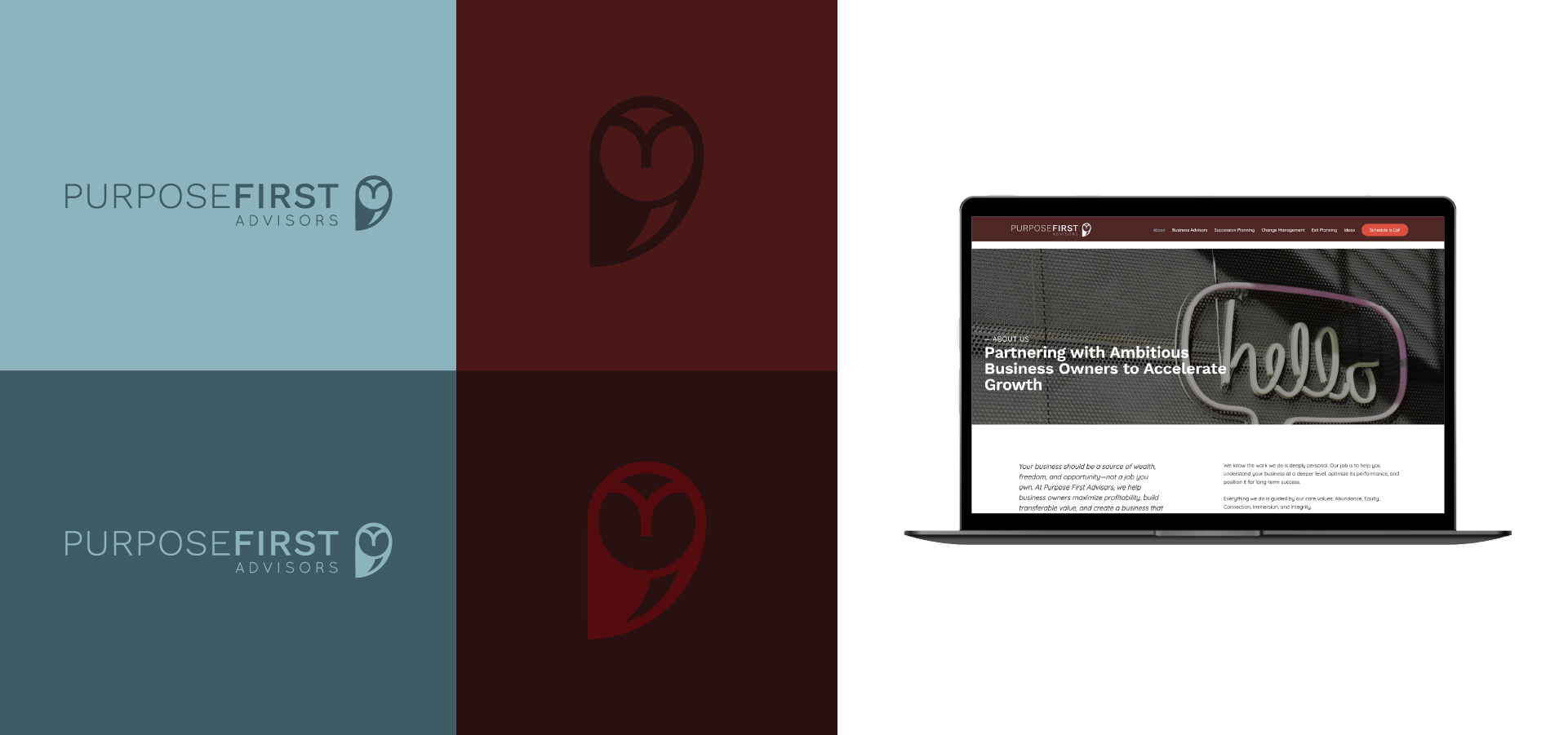

August 2025 Marketing News: Trends & Insights
Agentic AI Gets to Work
The “agent era” isn’t theoretical anymore. From media plans to copy generation to ecommerce personalization, autonomous AI systems are moving from pilot to production. Smart marketers are evaluating not just what agents can do—but where human override still drives value.
Marketing Compliance Catches Up to AI
With AI voice calls and automated outreach on the rise, regulations like TCPA are under the microscope. Expect tighter enforcement around consent, disclosures, and opt-outs. The new challenge: scale personalization without crossing legal or ethical lines.
Voice and Visual Search Gain Ground
Whether it’s shopping via Siri or snapping a product photo to find it online, voice and visual search are becoming default behaviors. Brands that optimize for conversational queries and image-based discovery will have an edge in being found without being searched for.
Micro-Influencers Are the New Trust Signal
The glam influencer era is giving way to everyday authority. Brands are leaning into niche creators with loyal followings—not just for reach, but for credibility. The key isn’t fame—it’s fit.
Memes Go Strategic (and Legal)
Meme marketing has matured. With generative tools speeding up production, brands are building meme libraries, testing concepts, and running internal approvals like campaign assets. Authenticity and timing still matter—but now so does IP compliance.
First-Party Data Becomes the Plan, Not the Backup
As cookie-based tracking continues its decline, marketers are designing full-stack experiences around owned data. It’s not just about privacy—it’s about building trust systems that convert.
Short-Form Meets Depth
Short-form is no longer enough on its own. Savvy brands are using TikToks and Reels to open doors—then following up with long-form content to build authority and drive decisions. Fast hooks + deep substance is the new content funnel.
Our Take
If July was about proving potential, August is about precision.
AI systems are now mature enough to act on your behalf—but not yet thoughtful enough to represent your brand without oversight. The gap between scale and integrity is where great strategy lives.
At Seafoam, we’re seeing three marketing truths get sharper this month:
- Automation is only as smart as the inputs. The future isn’t “set it and forget it”—it’s “guide it and grow it.” Use AI to extend your capacity, not abdicate your standards.
- Earned attention still matters. While agents and algorithms can get you in front of people, trust is still built the old-fashioned way—through relevance, consistency, and value.
- Systems create staying power. From first-party data strategies to micro-influencer programs to content flywheels, the brands winning now aren’t just chasing trends—they’re building marketing infrastructure that compounds over time.
If your team is experimenting with new tech or new formats, now’s the time to step back and ask: Is this helping us show up more clearly, more helpfully, more consistently?
Good marketing isn’t just scalable. It’s thoughtful. It earns belief.
August 2025 Marketing Events
Affiliate Summit East
August 4–5 | New York, NY
Performance, partnerships, and affiliate strategy at scale. More Information.
Digital Summit Minneapolis
August 6–7 | Minneapolis, MN
Workshops and sessions on digital strategy, content, and customer experience. More Information.
MozCon
August 12 | London, UK
One of the leading events for SEO professionals and search marketers. More Information.
Ai4 Conference
August 11–13 | Las Vegas, NV
Enterprise-level AI adoption, from martech to analytics to CX. More Information.
eTail Boston
August 11–14 | Boston, MA
A look into the future of ecommerce, omnichannel marketing, and retail innovation. More Information.
CDAO Chicago
August 13-14 | Chicago, IL
A data-focused summit on AI, personalization, and marketing operations. More Information.
AMA Summer Academic Conference
August 22–24 | Chicago, IL & Virtual
A blend of academic research and real-world marketing insights. More Information.
Content Entrepreneur Expo
August 24–26 | Cleveland, OH
For content-first businesses looking to scale, monetize, and lead. More Information.
State of Social 2025
August 26–27 | Perth, Australia
Emerging platforms, strategy evolution, and the future of social engagement. More Information.
All About Music Conference
August 20–22 | Mumbai, India
Marketing and growth strategy for the music and entertainment industries. More Information.
Curious how these trends or events connect to your own goals? At Seafoam, we track the shifts so you don’t have to. If a particular signal sparked something for your brand, let’s talk. No pitch—just perspective.
When growth stalls, the knee‑jerk move is to shove more people into the top of the funnel. Trouble is, attention is now the most expensive commodity in marketing. The smarter play is to run a tighter, deeper company instead of a louder one. Brand Experience (BX) and Customer Experience (CX) are the dual engines that make that happen.
1. Two Sides of the Same Flywheel
| Discipline | What It Does | Why It Pays |
|---|---|---|
| Brand Experience | Crafts the promise—identity, voice, values, behavior. | Sets expectations, attracts the right buyers, commands premium pricing. |
| Customer Experience | Delivers the promise—every touchpoint before, during, and after the sale. | Turns trust into revenue, retention, referrals. |
BX makes the promise. CX keeps it. When those threads line up, you create a growth flywheel that advertising alone can’t match.
2. The Hard Numbers Behind “Soft” Experiences
- Shoppers who rate their experience “very good” spend ~140 % more over their lifetime (Harvard Business Review)
- 73 % of consumers say experience outranks even price as a purchase driver (PwC research)
- Consistent branding can lift revenue by ~23 % (Lucidpress / Marq)
- The industry leader in Net Promoter Score typically grows 2× faster than competitors (Bain & Company)
- B2B firms that deliver personalized, omnichannel CX grab >10 % market share annually (McKinsey & Company)
- Customer-obsessed brands see 49 % profit acceleration and 51 % better retention (Forrester)
- Fully engaged customers drive a 23 % profit premium (Gallup)
Experience isn’t fluff. It’s the most capital‑efficient lever you have.
3. How BX + CX Compound Lifetime Value
- Retention – Fewer exits lengthen the revenue runway
- Expansion – A seamless journey makes upsells feel inevitable, not intrusive
- Referrals – Delighted customers import their own pipeline at near‑zero CAC
- Price Power – Trust cushions margins when competitors race to the bottom
The Compounding Customer Lifetime Value Formula
CLV (Customer Lifetime Value) = Average Order Value × Purchase Frequency x Customer Lifespan
BX raises order value, CX boosts frequency, both increase customer lifespan. Simple math, outsized upside.
4. Your Website and UX: The First Test of Brand Integrity
Your website is where BX meets CX. It’s often the first real interaction someone has with your brand—and where they decide if you’re worth their time. A poor experience here creates an instant disconnect between promise and reality.
What we look for:
- Does the brand voice carry through in headlines, CTAs, and navigation labels?
- Is the experience intuitive, fast, and emotionally consistent?
- Can a visitor get value before giving up their email?
A great website doesn’t just convert leads, it builds belief. It’s a 24/7 demonstration of how seriously you take your own promise.
5. Top-of-Funnel, the Experience-Centric Way
Brand and customer experience don’t replace top-of-funnel marketing, they transform it.
In the experience-led model, TOF marketing isn’t about maximizing impressions. It’s about earning attention with clarity, utility, and resonance:
- Clear positioning draws in the right leads (and filters out the wrong ones)
- Useful, value-rich content starts trust-building from the first click
- Consistent delivery—ads, social posts, sales replies—aligns with brand behavior
A great funnel doesn’t just catch traffic, it attracts belief, filters for fit, and sets up a relationship, not just a transaction
6. Building an Experience Engine
6.1. Start With Brand Foundations
- Clarify positioning – One differentiated, audience‑centric statement
- Document guidelines – Visuals, voice, and behavior rules everyone can follow
- Audit for leaks – Where does reality break the promise? Patch first impressions, onboarding flows, support scripts
6.2. Map the Full Journey
Identify signature “moments that matter” (e.g., proposal delivery, first‑use aha moment, renewal prompt) and redesign each for simplicity, surprise, or delight
6.3. Align Culture and Ops
- Empower frontline teams to fix issues on the spot
- Tie incentives to NPS or earned‑growth metrics, not just quarterly bookings
- Use regular “experience retros” the way engineering teams run sprint retrospectives
6.4. Leverage Data & AI Thoughtfully
Predict churn, surface next‑best offers, and personalize content—but always through the lens of making the customer’s life easier, not exploiting attention
7. Measuring What Matters
| Metric | Why It Matters | Targets to Watch |
|---|---|---|
| Net Promoter Score | Proxy for referral growth | Trend line vs. industry NPS leader |
| Earned Growth Rate | % of revenue from retained + referred | > Sustainable CAC payback threshold |
| Time-to-Value (TTV) | Drives retention and upsell velocity | Keep trending down quarter-over-quarter |
| Consistency Index | % of assets that meet brand standards | Aim for >90 % compliance |
| Experience-Qualified Leads (EQL) | Prospects referred by happy customers | Increase relative share of new pipeline |
8. From Funnel-Stuffing to Flywheel-Building
Traditional growth = “feed the funnel.” Modern growth = “tighten the flywheel.” Every marginal improvement in experience compounds:
- Stronger brand promise attracts the right buyers
- Seamless CX converts and satisfies them
- Loyal advocates loop fresh, low‑CAC customers back to Step 1
Repeat, accelerate, dominate
9. Why Experience-Led Growth Is the Future
In a world where trust is scarce and attention is expensive, experience-led growth is the only strategy that compounds. Great branding gets remembered. Great service gets talked about. When you connect those two into one coherent system, you’re not just building a business, you’re building a reputation, a community, and a long-term growth engine.
The future isn’t louder. It’s better. And better starts inside.
We’re proud to share that Seafoam has been honored with two 2025 American Digital Design Awards from Graphic Design USA (GDUSA)—recognizing standout work for Chaney Windows and Doors and TSI Global Companies.
These awards reflect something bigger than good design. They represent the kind of thoughtful, strategic marketing systems we build for businesses who want to grow with clarity—and who care about showing up well for their customers.
A New Chapter for Chaney Windows + Doors
Chaney has been a trusted name in windows and doors across St. Louis for decades, but their digital presence hadn’t caught up with the quality of their work. Seafoam partnered with them to modernize every aspect of their marketing—from messaging to design to performance—and make sure their brand could scale with them.
We rebuilt their website with clearer navigation, faster load times, and copy that finally reflected their values. We refreshed their visual identity, rewrote their mission and vision, and rebuilt their paid search and CRM systems. The result? A marketing system that reflects who they are: built to last, built to grow.
The new site has already won international recognition, including a Vega Award and a Web Excellence Award. The GDUSA honor is the latest affirmation that this work is doing what it was meant to do—positioning Chaney as the modern, trustworthy, family-run business it has always been.
Read the full Chaney case study →
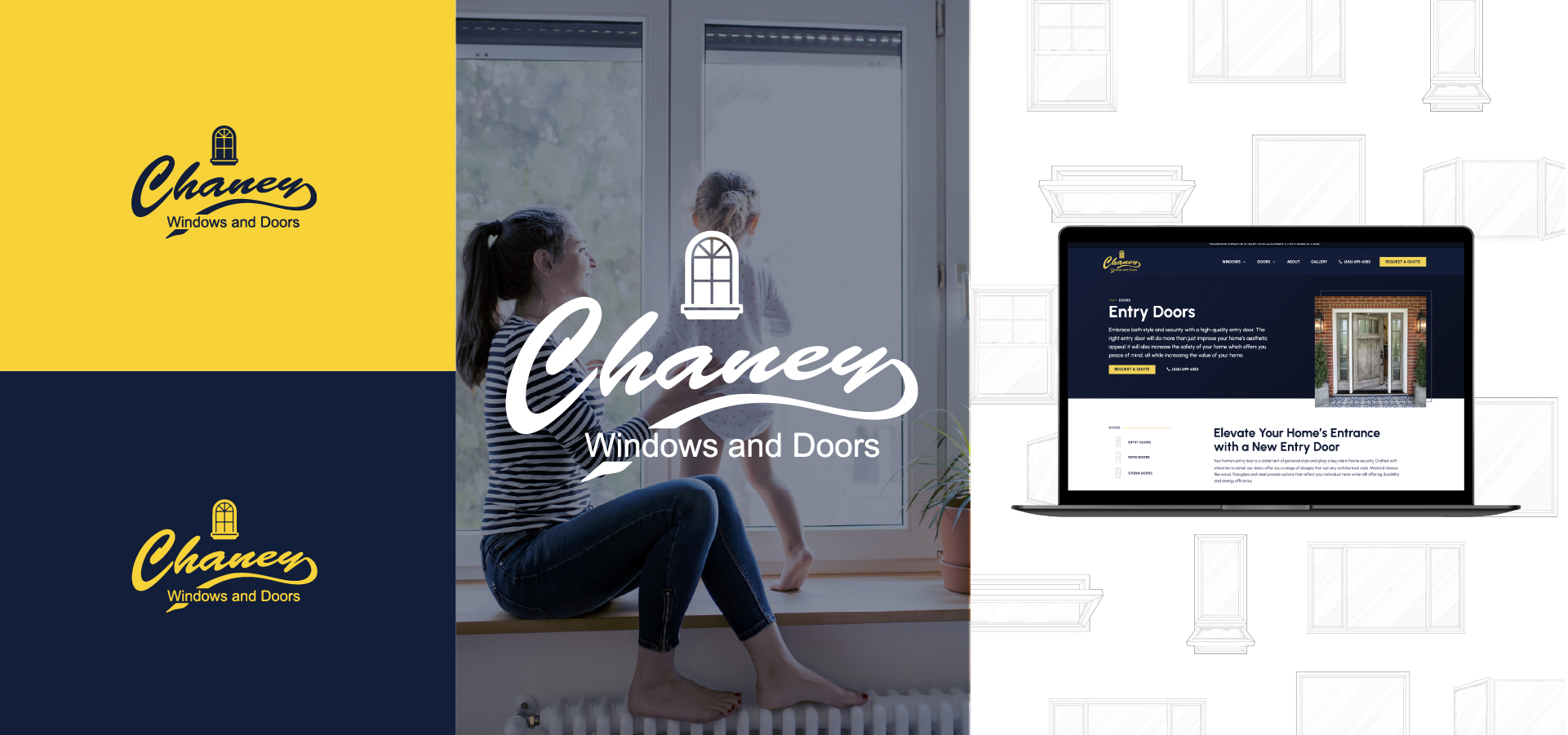
Lifting the Hood at TSI Global
TSI Global is an AV integration and IT infrastructure company that’s been doing remarkable work behind the scenes for decades. Their old site, though, was weighing them down—slow to load, confusing to navigate, and full of technical clutter. Our goal was to create a cleaner, faster, more strategic site that aligned with how they do business: sharp, modern, and buttoned-up.
We started with research: a baseline SEO audit, competitive analysis, and UX mapping to restructure the entire site. From there, we handled everything from visual clean-up and plugin optimization to new page architecture, better content strategy, and an upgraded reporting system. Then we tackled SEO and laid the groundwork for high-performance campaigns to follow .
The end product isn’t flashy—but it’s effective. And for a company like TSI, that’s the whole point. This GDUSA award is a nod to the kind of behind-the-scenes excellence we’re always chasing.
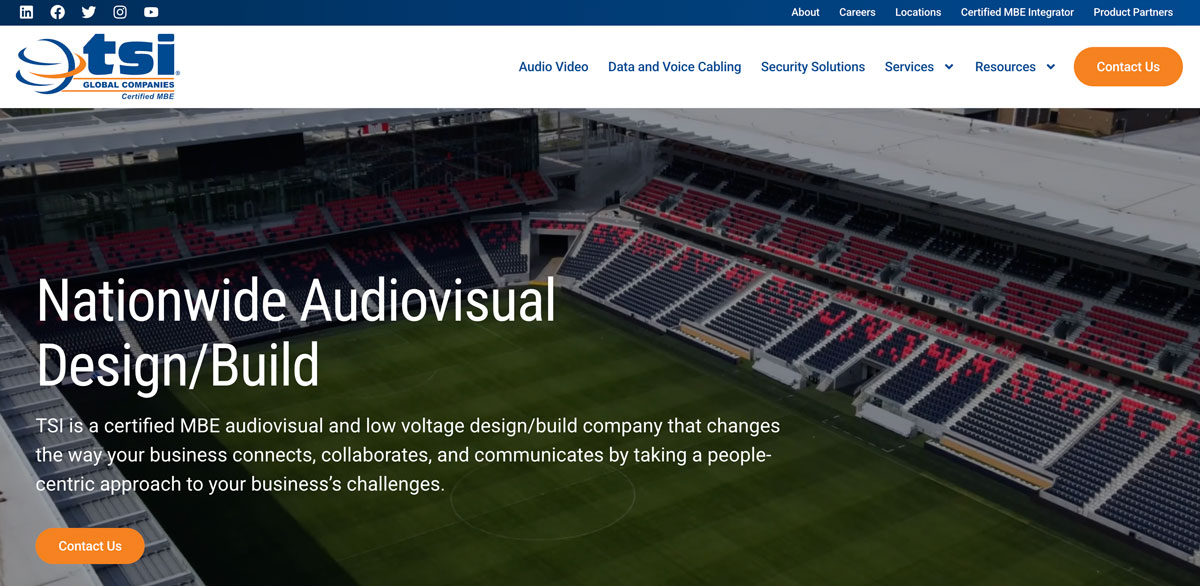
More Than a Moment
At Seafoam, we don’t chase awards. But when the work gets recognized, we pause to celebrate what it really means: that we’re helping good businesses become great brands—without losing who they are along the way.
Two awards. One approach. Built for the long term.
If your company’s ready for marketing that actually works (and looks the part), we’d love to talk.
At Seafoam, we believe the best marketing is grounded in more than strategy—it’s grounded in character.
We’ve always said we build systems that help businesses grow. But we also believe in a different kind of growth—the kind that ripples out. To your customers. Your community. Your corner of the world.
For us, “doing good” isn’t a campaign or CSR play. It’s the quiet, consistent work of being a good neighbor. It’s how we show up in Maplewood, where we’ve built our lives and our business. It’s how we show up for our partners, investing time and energy into relationships that go beyond the transaction.
And most importantly, it’s how we think business should work.
Business as a Force for Good (and for Real)
We’ve all seen the glossy versions: brands talking about values while outsourcing every decision that actually matters. At Seafoam, we try to keep things more grounded. Less “purpose-driven” marketing speak—more purpose, period.
We give where it makes a difference. That means clearing school snack lists, helping nonprofits tell their stories, jumping in when our neighbors face a crisis. We show up for our community the way we’d want a good neighbor to.
It also means we choose clients whose missions we can stand behind. We help them build systems that make their businesses stronger—because strong businesses lift up everyone around them.
The ROI of Being a Good Business
It’s easy to think of marketing as a way to get ahead. But the way we see it, great marketing also pulls others forward.
When a local nonprofit gets the right story in front of the right funders? That’s impact.
When a purpose-led startup finally looks as credible as it actually is? That’s transformation.
When a school district’s needs are met quietly, without the red tape? That’s community.
These aren’t the usual marketing metrics. But we think they matter just as much.
What’s Next
We don’t know exactly where this leads—but we’re not chasing optics or awards. We’re building something sturdier. The kind of marketing that creates real momentum. The kind of business that leaves a place better than we found it.
If you believe in that too, we’d love to work with you.
Let’s do some good together.
In this edition of July 2025 Marketing News, we unpack the biggest shifts—from AI agents to Gen Z brand expectations—and preview key conferences where the future is being shaped in real time.
Table of Contents
July 2025 Marketing News: Trends & Insights
The Intelligence Economy Meets the Attention Economy
The smartest marketers are no longer just chasing eyeballs—they’re blending cultural fluency with AI-driven insights to stay relevant and resonant. Strategy is no longer separate from tooling; it’s embedded in how content is generated, distributed, and optimized on the fly.
Agentic AI Becomes Actionable
We’re entering the agent era. AI is no longer just assisting—it’s acting. From automated stylists to media planners and campaign generators, agentic systems are proving they can deliver meaningful results with minimal human intervention. The next competitive edge? Knowing where humans still matter.
AI Creativity Scales—ROI Still Trails
CMOs at Cannes revealed budgets over $10M annually going toward AI—but admitted ROI tracking is lagging. The takeaway: brands are betting big on AI-led efficiency and output, but measurement systems must evolve in parallel to capture what truly moves the needle.
Brand Activism Hits Reset
The era of overt brand virtue-signaling is fading. Consumers are demanding authenticity and action—not statements. Brands that are quietly doing the work (local impact, ethical ops, durable values) are earning trust without the performative gloss.
Gen Z Expects More than Aesthetic
Pinterest and Vogue Business data underscore this: Gen Z doesn’t just want cool—they want real, immersive, valuable experiences. That includes everything from 3D product previews to flexible payment options. Nostalgia helps, but only if paired with substance.
Holiday Campaigns Start Now
Yes, in July. Beauty and retail marketers are launching holiday strategies now, using AI to predict demand and personalize offers. Longer lead times, built-in payment flexibility, and micro-influencer bundles are the new playbook for Q4 wins.
Beauty & Wellness Investors Want Proof
In high-growth consumer categories, investors are prioritizing clinical-grade claims, real efficacy, and cultural cachet. “Clean” without substance won’t cut it. For any brand chasing strategic growth or acquisition, a clear positioning and verified results matter more than ever.
AI + Empathy Is the Winning Combo
The brands seeing lift from AI aren’t replacing creatives—they’re augmenting them. Sentiment tracking, nuanced message testing, and real-time adaptive flows are giving marketers new ways to balance logic and feeling.
Memes as Strategy
Meme marketing is no longer a side hustle—it’s a core tactic. With AI speeding up concepting and design, brands can drop culturally responsive content at scale. The challenge: staying authentic while moving fast.
Privacy-Centered Personalization Gains Steam
As cookies disappear, brands are turning to first-party data and conversational search to deepen relevance. Personalization is getting smarter—and quieter. Done right, it feels like intuition, not surveillance.
Our Take
If June was about momentum, July is about meaning.
AI is moving fast—but it’s not a free pass. Every automation layer needs to be anchored in values, data integrity, and human understanding. Otherwise, brands risk scaling noise instead of resonance.
At Seafoam, we’re seeing three core principles hold steady:
- Fast doesn’t mean sloppy. AI can speed things up, but your brand’s clarity, tone, and intent still need stewardship. Quality matters more than ever.
- Marketing is a system, not a moment. Trends like meme drops or early gifting only work when integrated into a larger journey—one that’s built to compound over time.
- People still buy from people. Whether it’s an agentic AI or a social post, trust comes from consistency, transparency, and usefulness.
Our advice this month: If you’re piloting new AI tools, do it with a brand compass in hand. Let the tech do the lifting, but keep your human voice at the center.
July 2025 Marketing Events
DigiMarCon DC
July 1–2 | Washington, D.C. — Digital strategy, AI, and content marketing, with hands-on sessions for agency leads.
WordCamp Montclair
July 1–2 | Montclair, NJ — A web-focused event that’s particularly relevant for dev-leaning marketers and creative teams.
DigiMarCon Austin
July 7–8 | Austin, TX — Regional focus on mobile-first design, social media marketing, and martech.
DigiMarCon New York
July 7–8 | New York, NY — East Coast insights into automation, conversion, and cross-channel campaigns.
ANA Digital & Social Media Conference
July 14–16 | Carlsbad, CA — Deep dive into ROI frameworks, storytelling formats, and channel diversification.
Techspo New York + Charlotte
July 14–16 | Dual cities — Exploring emerging martech, from immersive displays to AI-powered data tools.
Momentum AI
July 14–16 | San Jose, CA — Focused on next-gen marketing automation and agentic AI innovation.
eduWeb Summit
July 15–17 | Portland, ME — Ideal for marketers working in higher ed or nonprofit sectors with digital ambitions.
DevRelCon
July 18–19 | New York, NY — A niche but rising space where content marketing meets developer relations.
DigiMarCon Hawaii & Pacific
July 24–25 | Honolulu, HI — Brand storytelling, Pacific market strategy, and community-led growth models.
iMedia Future of Marketing Summit
July 29–31 | Christchurch, NZ — Forward-thinking content and global strategy alignment.
DigiMarCon Japan & Asia
July 30–31 | Tokyo, Japan — Regional market insights and digital expansion strategies in APAC.
Seattle eCommerce Summit
July 30–31 | Seattle, WA — End-to-end customer journey optimization for retail brands.
Curious which of these trends or events is most relevant for your business? We’re always tracking the shifts and sharing our take—no pitch, just perspective. If something sparked an idea, reach out or follow us on LinkedIn for the next pulse.
I didn’t start Seafoam with a five-year plan or a brand manifesto. I just got to work—thoughtfully, thoroughly, and with a point of view. From day one, the goal wasn’t to build an agency. It was to build a practice—one that treated marketing not as surface-level polish, but as the structure behind how a business shows up, connects, and grows.
Fifteen years later, that still holds. The team is bigger, the playbooks are sharper, and the brands we work with are stronger for it. But the core belief remains: every step of the customer experience is a brand decision.
What the First Fifteen Taught Me
- Integrity compounds. Every yes and every no adds up. Do the right thing—even when no one’s watching—and good things tend to follow.
- The extra mile is faster than it looks. Cutting corners usually means doubling back. Doing it right the first time saves time, money, and stress.
- Simplicity wins. Clear beats clever. In brand, in message, in delivery—clarity makes the whole experience work harder.
- Optimistic pragmatism > empty hype. Hope is essential. So is a solid plan. We try to keep our heads in the clouds and our feet on the ground.
- Community isn’t an add-on. It’s the whole point. Whether it’s clearing out MRH’s snack wish lists or helping a nonprofit shape its story, we believe good work and good impact go hand in hand.
The Work That Shaped Us
In the beginning, word of mouth kept our calendars full. Over time, we started to notice what worked—not just for launches, but across the full customer experience. So we turned those patterns into playbooks: brand workshops, journey audits, strategic sprints.
Now we build systems that deliver long after launch. Tools our clients actually own. Work that doesn’t just look good—it holds up. And when things are built right, they keep working.
Thanks
To every client who’s trusted us with your brand—thank you.
To every Seafoam team member, past and present—thank you for showing up with curiosity and grit.
And to our Maplewood neighbors—thanks for cheering us on. We love being rooted here.
What’s Next
Year sixteen starts now. We’re leaning into:
- Deeper focus, better systems. We’re doubling down on experience-driven strategy—tailored, scalable, and built to last.
- Human-centered AI. The right tools can sharpen our work—but the spark still comes from people.
- Stronger roots, wider reach. We’ll invest in our people, mentor emerging talent, and embed ourselves even deeper in the communities we serve.
The first fifteen were about proving we belonged. The next fifteen? We’re shaping what comes next.
Here’s to what’s ahead.
– Nikki
We’re honored to share that the Purpose First Advisors website—conceived, designed, and built by Seafoam—has been named a Vega Award winner in the “Best Consulting Website” category.
But this project was never just about a website.
It was about helping a values-driven advisory firm step confidently into the digital space with a brand and platform that truly reflect the caliber of their work.
Turning Strategy Into Story
From day one, Purpose First Advisors was clear on their mission: to guide business owners through pivotal moments with clarity, care, and strategic insight. But their old brand didn’t quite say that. The visuals felt dated. The messaging didn’t carry the warmth or authority they were known for. And their website didn’t support the kind of thoughtful, high-touch engagement they bring to every client relationship.
So we got to work.
Through a comprehensive brand strategy process, we unpacked what made Purpose First distinct: empathetic leadership, deep experience, and a belief that business growth and personal integrity don’t have to be at odds.
The result?
A rebrand rooted in strategy—with visual and verbal identity systems built to earn trust at a glance.
Branding That Reflects the Depth of Their Work
Seafoam delivered a full suite of brand assets to help Purpose First show up with consistency and confidence across every touchpoint:
- A new logo and visual identity anchored in deep maroon and sage—professional, grounded, and quietly powerful.
- A thoughtful typography system that balances modernity with warmth.
- Messaging guidelines that emphasize clarity, empathy, and strategic depth—without drifting into jargon.
Every design decision, every word, was made to reinforce the same message: this is a firm you can trust with your biggest decisions.

A Website That Guides, Not Just Informs
The website itself became the capstone of the new brand: an elegant, user-focused experience that mirrors the thoughtful advisory work Purpose First is known for.
We reimagined the site architecture to ensure visitors could self-identify and easily find what they needed—whether they were exploring leadership coaching or preparing for a business transition. Strategic on-page SEO and carefully crafted content helped bring the site visibility without sacrificing voice.
And the response has spoken for itself. Higher engagement, clearer user paths, and a strong digital foundation built to grow alongside the firm.

Recognition That Reinforces the Work
The Vega Award win is a proud moment—but more than that, it’s validation that purposeful, strategic marketing still stands out. It’s a reminder that when brand, reach, and relationship are aligned, you don’t just get attention. You get remembered.
We’re grateful to have been trusted with such meaningful work and proud to help Purpose First Advisors continue making their mark—with clarity and care.

